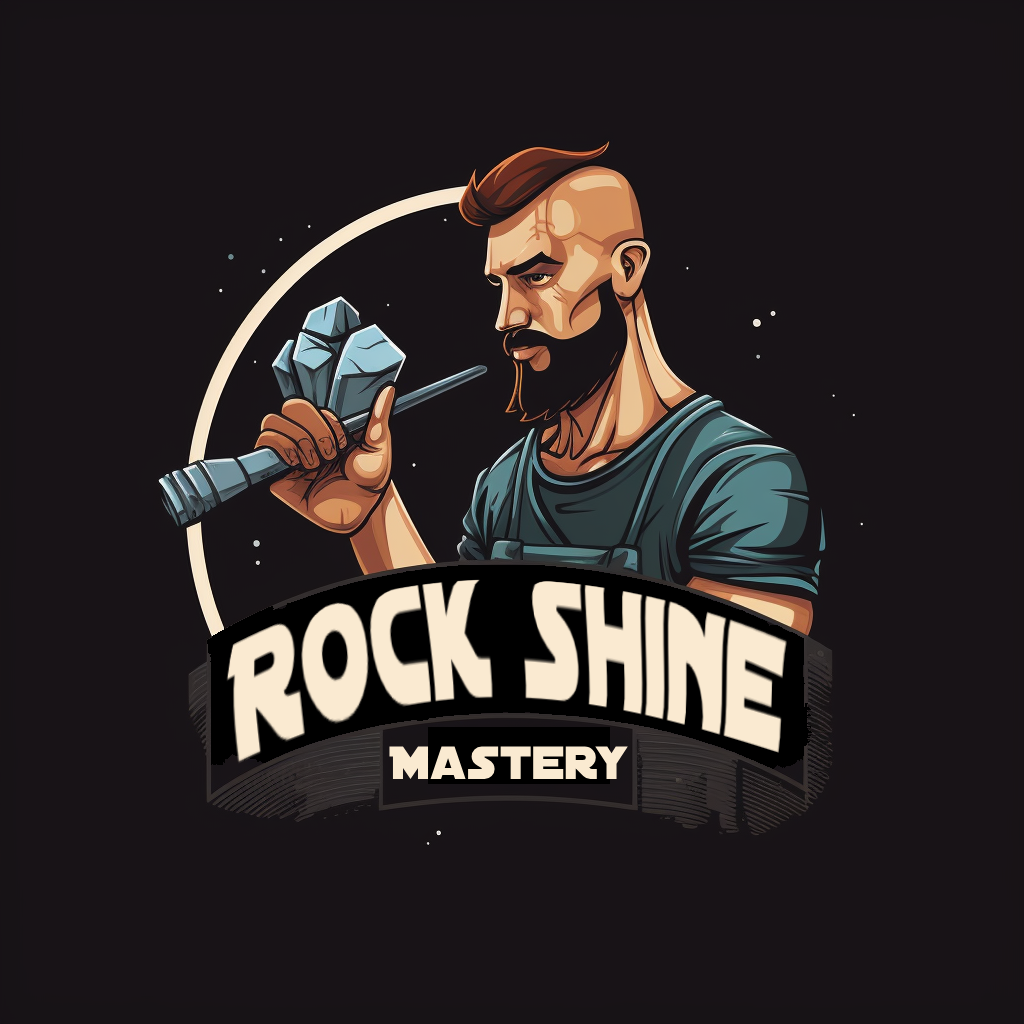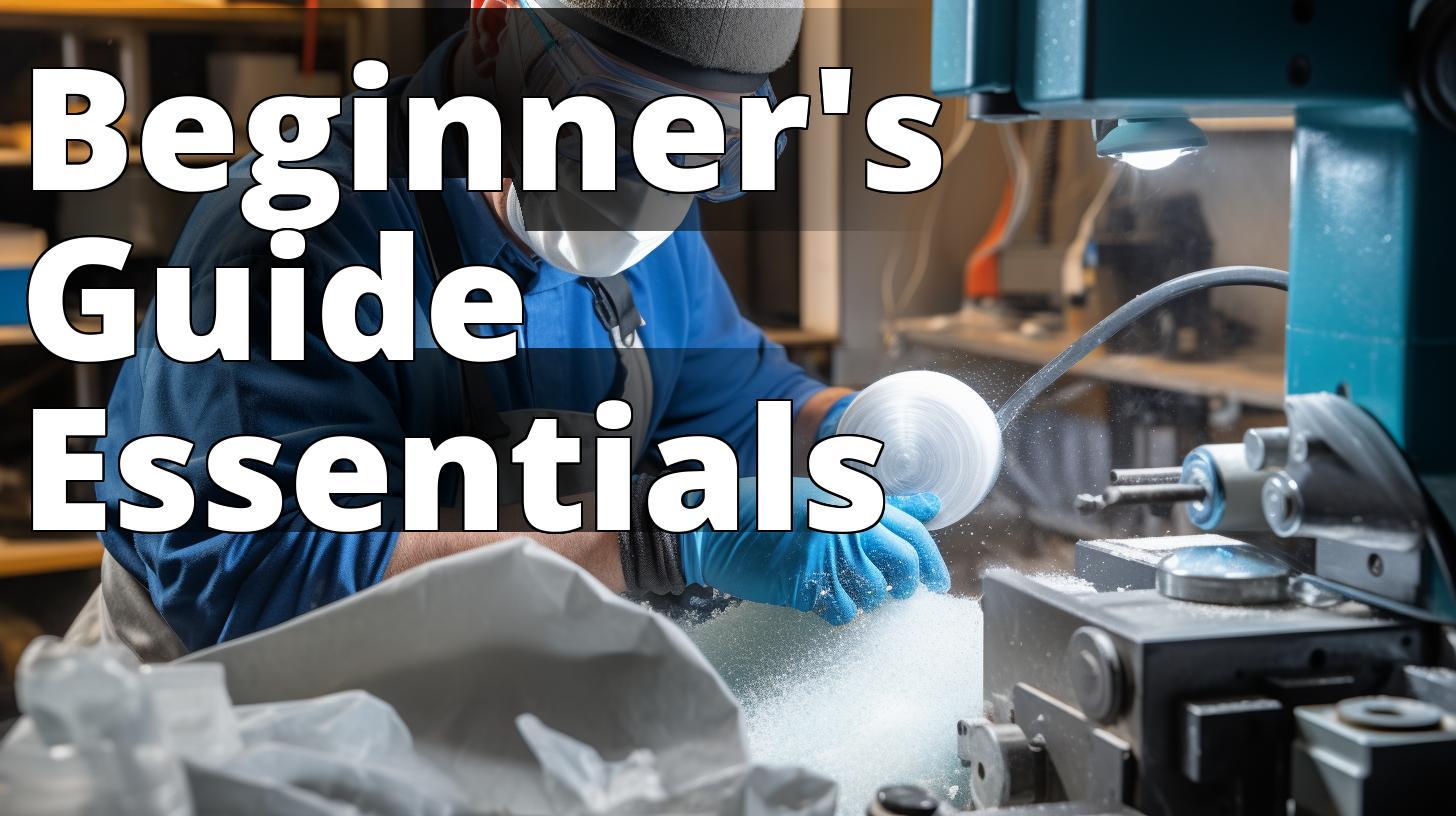If you’re interested in the art of lapidary, you’ll need to start by investing in some essential tools. Lapidary is the process of cutting, polishing, and shaping gemstones and rocks into decorative pieces, and it requires some specialized equipment. Whether you’re a beginner or an experienced enthusiast, having the right tools is crucial for your success. In this article, we’ll explore the essential lapidary equipment for beginners and provide expert tips and recommendations on how to get started.
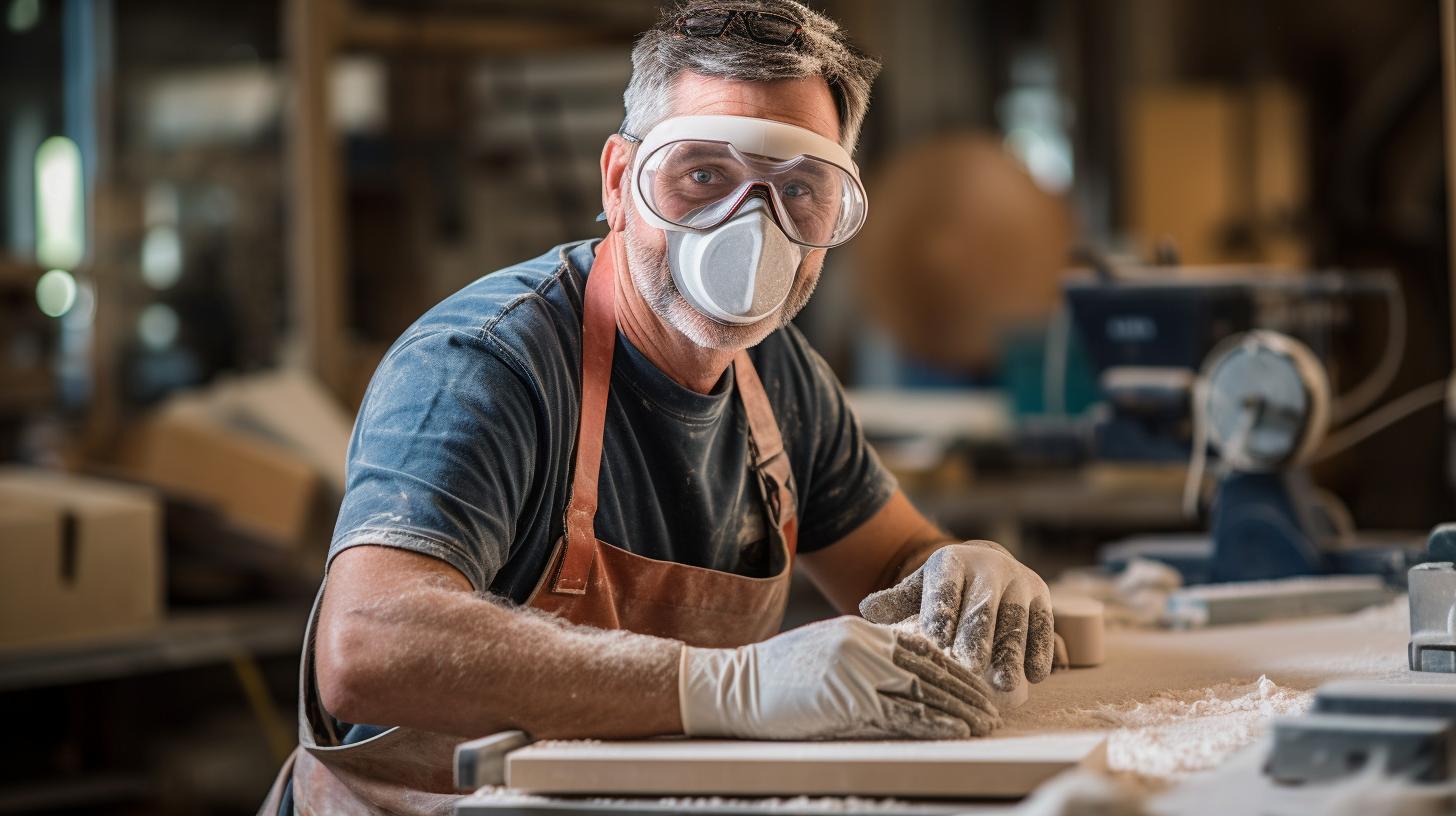
Safety Gear
Before you start, it’s important to invest in some personal protective equipment (PPE) to keep yourself safe while working with rocks and gemstones. The dust and debris generated during lapidary work can be harmful to your eyes, skin, and respiratory system, so you’ll need to wear safety glasses, dust masks, and gloves. It’s also essential to have proper ventilation in your workspace to prevent inhalation of dust and debris.
Essential Lapidary Equipment for Beginners
- Safety gear, rocks and gemstones, trim saw, tumbler, cabbing machine, and flex shaft tool are essential equipment for beginners in lapidary.
- Advanced lapidary equipment for intermediate lapidaries includes faceting machine, flat lap machine, diamond grinder, ultrasonic cleaner, and lapidary accessories.
- Safety tips like personal protective equipment, workspace safety, tool and equipment safety, and safe disposal of waste materials are crucial for beginners in lapidary.

Rocks and Gemstones
The first step in lapidary is selecting the right rocks and gemstones to work with. As a beginner, it’s best to start with softer stones such as agate, jasper, and quartz. These stones are readily available and affordable, and they’re easy to work with using basic lapidary equipment. You can source these stones from online retailers, gem shows, or rock shops.
Trim Saw
A trim saw is an essential tool in lapidary, as it allows you to cut rough rocks into smaller, more manageable pieces. This tool uses a diamond blade to slice through rocks and gemstones, making it easier to shape and polish them later on. According to Rock Seeker’s beginner lapidary equipment guide, a trim saw or slab saw is one of the top 5 tools for beginner lapidaries.
When selecting a trim saw, look for one with a powerful motor and a sturdy blade. The blade should be made of high-quality diamond, and it should be easy to replace when it becomes worn. Most trim saws have a water reservoir to keep the blade cool and lubricated, which helps to prevent overheating and prolong the life of the blade.
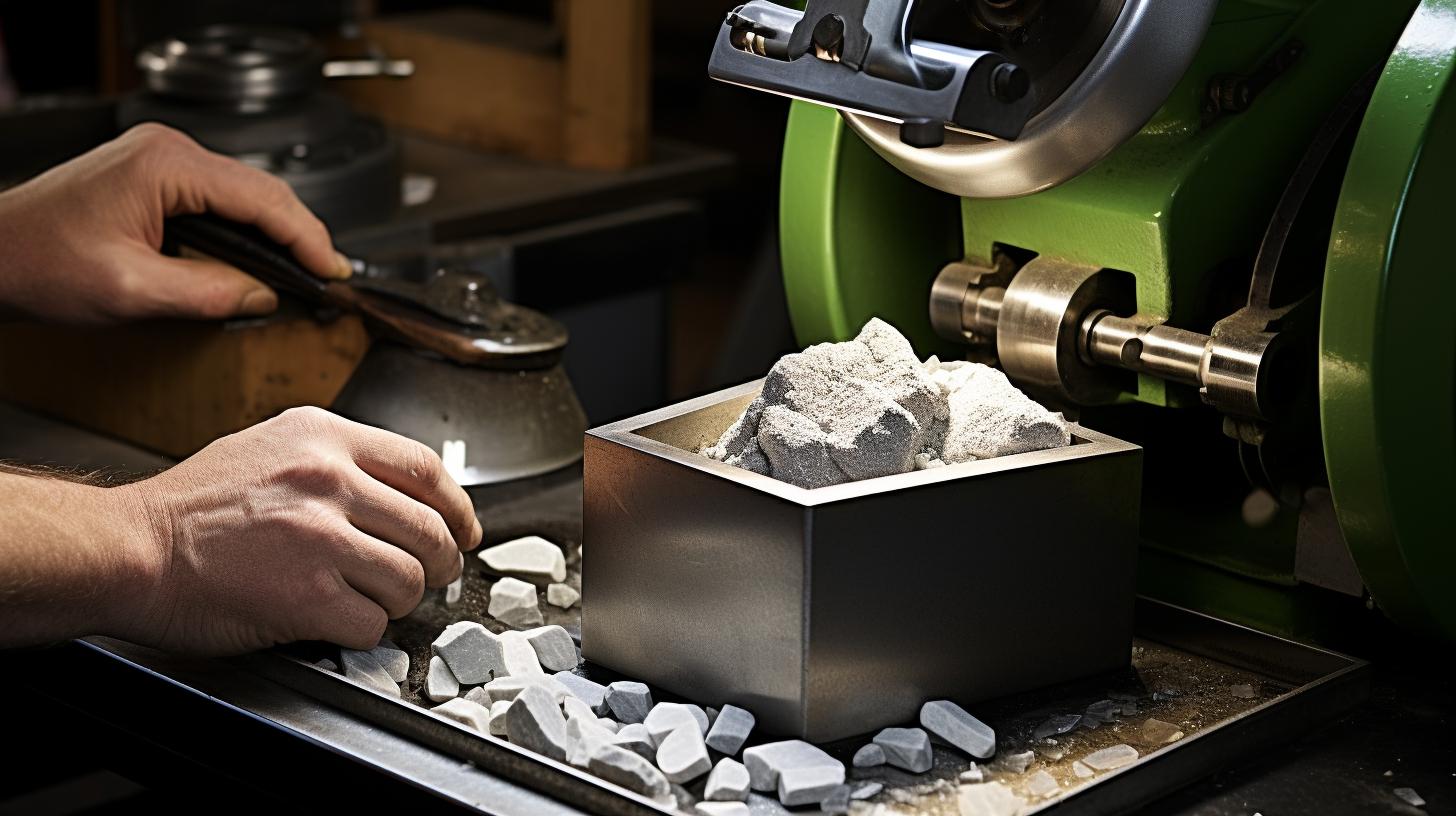
Tumbler
After cutting your rocks into smaller pieces, the next step is to polish them using a tumbler. A rock tumbler is a machine that uses abrasive grit and water to polish rough rocks into smooth stones. According to Rock Seeker, a rock tumbler is one of the essential tools for beginners in lapidary.
When selecting a tumbler, look for one that is sturdy and durable, with a large capacity. The tumbler should have a rubber barrel to minimize noise and vibrations. You’ll also need to purchase abrasive grit, which comes in coarse, medium, and fine grades. Start with a coarse grit to remove any rough spots on your rocks, and gradually work your way up to a fine grit for a smooth, polished finish.
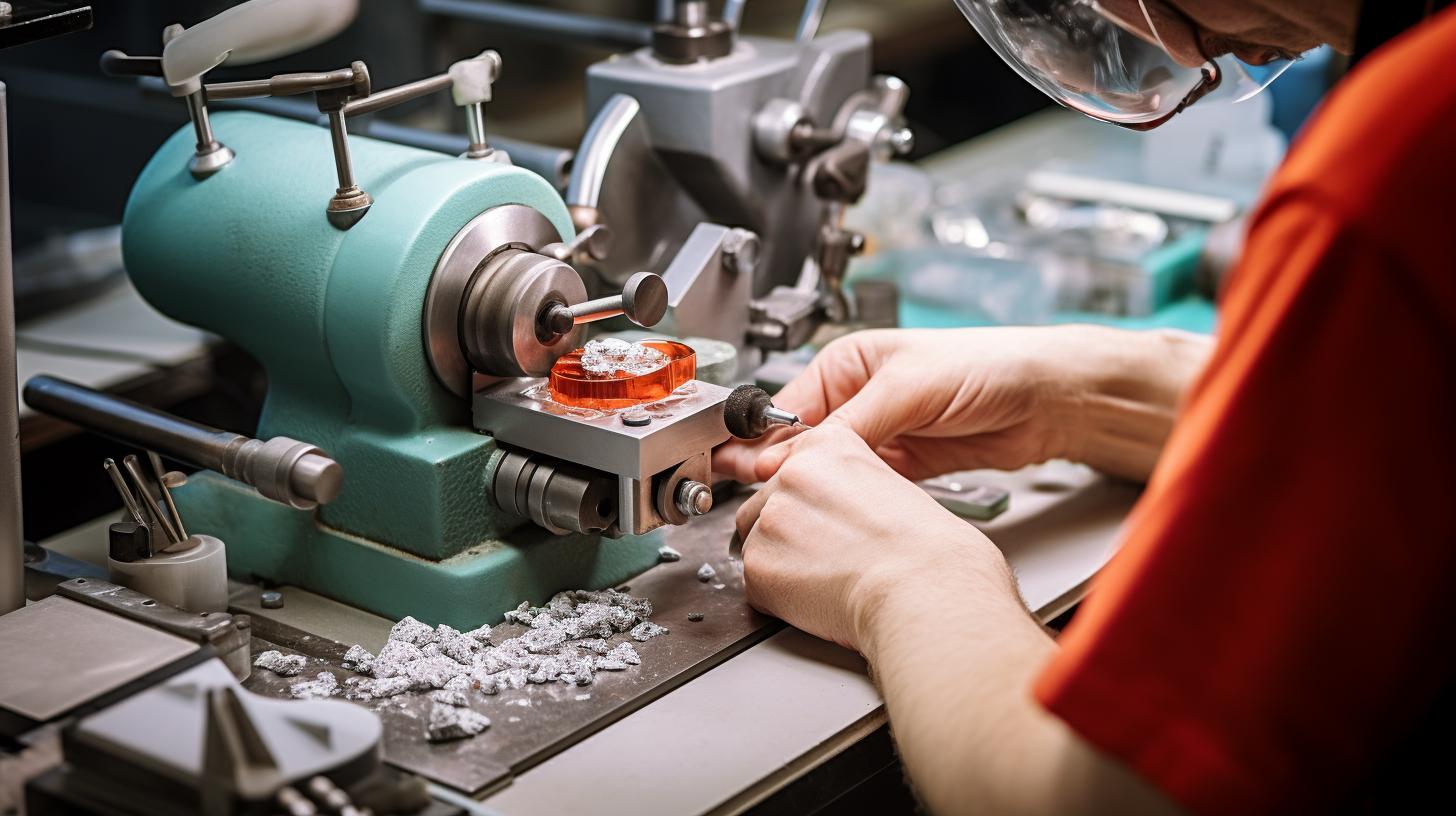
Cabbing Machine
Once you’ve polished your rocks, you can use a cabbing machine to shape and polish them into cabochons. A cabochon is a gemstone with a smooth, domed top and a flat bottom, which is often used in jewelry making. A cabbing machine uses diamond wheels and water to shape and polish stones into cabochons.
When selecting a cabbing machine, look for one that is versatile and easy to use. The machine should have a variety of diamond wheels in different sizes and grits, as well as a water reservoir to keep the wheels lubricated. According to Dop Wax, a cabbing machine is one of the essential lapidary tools for beginners.
Flex Shaft Tool
A flex shaft tool is a versatile tool that can be used for carving and shaping gemstones. This tool consists of a motorized handpiece connected to a flexible shaft, which allows you to work on small, intricate details. A flex shaft tool can be used for a variety of lapidary tasks, such as drilling, grinding, and polishing.
When selecting a flex shaft tool, look for one with a powerful motor and a flexible shaft. The handpiece should be comfortable to hold and easy to control. You’ll also need to purchase a variety of diamond bits and polishing tips to use with the tool.
Advanced Lapidary Equipment for Intermediate Lapidaries
If you’ve mastered the basics of lapidary and want to take your skills to the next level, you may want to invest in some advanced equipment. Here are some tools that intermediate lapidaries may find useful.
Faceting Machine
A faceting machine is a precision tool used to cut and polish gemstones into faceted gems. This tool uses a series of diamond-coated wheels to cut precise angles and facets into the stone. Faceting is a complex and challenging technique that requires a lot of practice and skill.
When selecting a faceting machine, look for one that is well-built and easy to use. The machine should have a variety of diamond wheels in different sizes and grits, as well as a digital angle display for accurate cutting. According to Rock Seeker, a faceting machine is an advanced tool that is not recommended for beginners.
Flat Lap Machine
A flat lap machine is a versatile tool that can be used for polishing and shaping larger stones and cabochons. This tool uses a flat, rotating disc covered with diamond abrasive to shape and polish stones. Flat lap machines can also be used for faceting, although they are not as precise as a faceting machine.
When selecting a flat lap machine, look for one that is sturdy and well-built. The machine should have a variety of diamond discs in different sizes and grits, as well as a water reservoir to keep the discs lubricated.
Diamond Grinder
A diamond grinder is a tool used to grind facets onto gemstones. This tool uses diamond-coated grinding wheels to shape and polish the facets on the stone. Diamond grinders are used by advanced lapidaries to create intricate and detailed designs.
When selecting a diamond grinder, look for one that has a powerful motor and a variety of diamond wheels in different sizes and grits. The grinder should also have a water reservoir to keep the wheels lubricated and cool.
Ultrasonic Cleaner
An ultrasonic cleaner is a tool used to clean and polish gemstones. This tool uses high-frequency sound waves to agitate a cleaning solution, which removes dirt and debris from the surface of the stone. Ultrasonic cleaners can also be used to polish stones and remove tiny scratches.
When selecting an ultrasonic cleaner, look for one that is sturdy and well-built. The cleaner should have a large capacity and a variety of cleaning modes. You’ll also need to purchase a cleaning solution that is safe for use on gemstones.
Lapidary Accessories
In addition to the main lapidary tools, you’ll also need to invest in some accessories to complete your lapidary kit. Here are some essential lapidary accessories to consider:
- Dop sticks: These are used to hold gemstones in place while cutting and polishing them.
- Grit: This is used with a tumbler to polish and shape rocks and gemstones.
- Laps: These are used with a flat lap machine to shape and polish larger stones and cabochons.
Safety Tips
Lapidary work can be dangerous, so it’s important to take proper safety precautions. Here are some tips to keep you safe while working with lapidary equipment.
The Importance of Patience in Lapidary
When I first started lapidary, I was eager to jump right in and create beautiful pieces of jewelry. However, I quickly learned that patience is a crucial aspect of lapidary work.
One particular project I was working on involved shaping and polishing a large piece of amethyst into a cabochon. I was excited to see the end result and rushed through the different stages of shaping and polishing. However, when I finally finished, I noticed scratches and imperfections on the stone that I couldn’t remove.
I was disappointed and frustrated, but I learned an important lesson. Lapidary work takes time, and rushing through the process can lead to mistakes and imperfections. Since then, I’ve learned to slow down and take my time with each step, ensuring that I’m creating high-quality pieces that I can be proud of.
In summary, lapidary work requires patience and attention to detail. Rushing through the process can lead to mistakes and imperfections, but taking the time to do each step carefully and thoroughly can result in beautiful, high-quality pieces of jewelry.
Personal Protective Equipment (PPE)
Always wear personal protective equipment (PPE), including safety glasses, dust masks, and gloves. These will protect your eyes, skin, and respiratory system from dust and debris generated during lapidary work.
Workspace Safety
Make sure your workspace is well-ventilated to prevent inhalation of dust and debris. You may also want to invest in a dust collection system to keep your workspace clean.
Tool and Equipment Safety
Be careful when handling sharp lapidary tools and equipment, and always follow the manufacturer’s instructions. Keep your tools and equipment well-maintained and in good working order.
Waste Material Safety
Dispose of waste materials in a safe and responsible manner. Rocks and gemstones can generate a lot of dust and debris, so make sure you’re disposing of these materials in accordance with local regulations.
Resources for Further Learning
If you’re interested in learning more about lapidary, there are many resources available to help you. Here are some recommended books and online resources for lapidary beginners:

Recommended Books and Online Resources
- The Complete Book of Jewelry Making by Carles Codina
- Introduction to Lapidary by Pansy Kraus
- The Gemology Project
- Lapidary Journal Jewelry Artist
Joining Local Lapidary Clubs
Joining a local lapidary club is a great way to meet other lapidary enthusiasts and learn new techniques. Many clubs offer workshops and events where you can learn from experienced lapidaries.
Finding Mentors and Experienced Lapidary Artists
Finding a mentor or experienced lapidary artist can be a valuable resource for learning new techniques and getting advice. Look for local lapidary clubs or online communities where you can connect with other lapidary enthusiasts.
Conclusion
Lapidary is a fascinating and rewarding hobby that requires some specialized tools and equipment. Whether you’re a beginner or an experienced enthusiast, having the right tools is crucial for your success. In this article, we’ve explored the essential lapidary equipment for beginners, as well as some advanced tools for intermediate lapidaries. We’ve also provided expert tips and recommendations on safety and resources for further learning. Remember to stay safe, have fun, and keep exploring the world of lapidary!
FAQs
Who needs lapidary equipment for beginners?
Anyone interested in cutting and polishing gemstones.
What is lapidary equipment for beginners?
Tools used to shape, grind, and polish gemstones.
How do I choose the right lapidary equipment?
Consider budget, space, and the types of stones you want to work with.
What if I don’t have much space for equipment?
Look for compact options like handheld grinders or mini saws.
How can I learn to use lapidary equipment?
Take a class, watch online tutorials, or read beginner’s guides.
What if I’m on a tight budget?
Look for used equipment, start with basic tools, or consider renting equipment.
